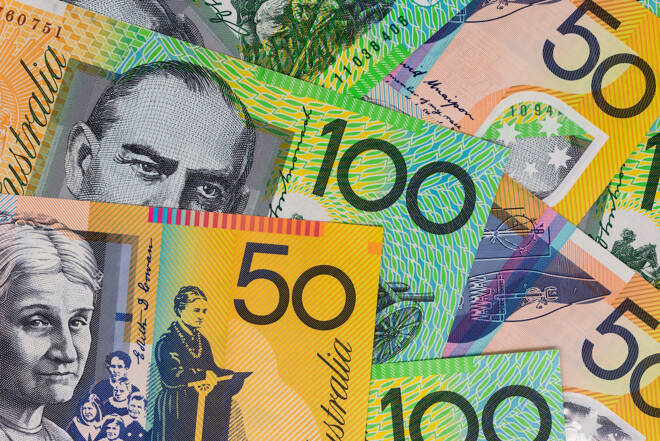Advertisement
Advertisement
AUD to USD Forecast: Middle East Tensions and RBA Decision Shape Aussie’s Path to $0.66
By:
AUD/USD's short-term outlook shaped by the RBA and the Fed as market dynamics shift. An escalation in the Middle East conflict remains a risk.
Highlights
- The AUD/USD surged 1.22% on Friday and ended the session at $0.65122.
- Investors reacted to the US Jobs Report amid expectations of a hawkish RBA. on Friday.
- On Monday sentiment toward the Fed and RBA monetary policy could conflict with updates from the Middle East.
Friday Overview of the AUD/USD
The AUD/USD surged 1.22% on Friday. Following a 0.63% gain on Thursday, the Aussie dollar ended the day at $0.65122. The Aussie dollar fell to a low of $0.64192 before climbing to a high of $0.65183.
Middle East Conflict and the RBA in Focus
News updates from the weekend raised the threat of an escalation in the Middle East conflict. Amid calls for a ceasefire, investors must consider news of Hezbollah attacks and any rhetoric from Tehran. The threat of a widening conflict across the region may impact the demand for the AUD/USD. Risk aversion would fuel a flight to the safety of the US dollar.
In contrast, the markets can consider progress toward a ceasefire as a possible de-escalation. A de-escalation would drive demand for the Australian dollar and riskier assets.
While the Middle East conflict will be a focal point, investors will likely consider the RBA interest rate decision. Economists forecast the RBA to raise the cash rate by 25 basis points to 4.35% on Tuesday.
A pickup in inflationary pressures has put the Australian economy at risk of an RBA-induced recession. Investors must consider whether it will be a one-and-done or whether the RBA will be willing to raise rates higher if needed.
FOMC Members in Focus
On Monday, FOMC voting member Lisa Cook is on the economic calendar to speak. Reaction to the US Jobs Report and ISM Services PMI will warrant consideration. Support for further monetary policy tightening would catch the markets by surprise.
Investors have written off a December Fed rate hike. However, bets on a March 2024 rate cut increased in response to the US Jobs Report. According to the CME FedWatch Tool, the probability of a 25-basis point rate cut stood at 25.5% on Friday vs. 13.7% one week earlier.
Short-Term Forecast
Rising bets on a March 2024 Fed rate cut and expectations of an RBA rate hike put the AUD/USD on a firmer footing. However, a return to $0.66 may hinge on news from the Middle East, RBA forward guidance, and economic indicators from China.
AUD/USD Price Action
Daily Chart
The AUD/USD remained above the 50-day EMA while sitting below the 200-day EMA, sending bullish near-term but bearish longer-term price signals.
Avoiding a drop below $0.65 would support a move to the 200-day EMA and $0.66162 resistance level.
News updates on the Middle East conflict and Fed commentary will be focal points on Monday.
However, an AUD/USD break below the $0.64900 support level would bring sub-$0.64500 and the 50-day EMA into view.
A 14-period Daily RSI reading of 64.58 indicates a rise to the $0.65500 handle before entering overbought territory (typically above 70 on the RSI scale).
4-Hourly Chart
The AUD/USD sits above the 50-day and 200-day EMAs, sending bullish price signals. From Friday, the bullish cross of the 50-day EMA through the 200-day EMA also sends bullish signals.
A return to $0.65500 would give the bulls a run at the $0.66162 resistance level and the trend line.
However, a drop below the $0.64900 support level would bring the EMAs and $0.63854 support level into play.
The 14-period 4-Hourly RSI at 73.01 shows the AUD/USD in overbought territory. Selling pressure could intensify without a bullish Aussie dollar catalyst.
About the Author
Bob Masonauthor
With over 28 years of experience in the financial industry, Bob has worked with various global rating agencies and multinational banks. Currently he is covering currencies, commodities, alternative asset classes and global equities, focusing mostly on European and Asian markets.
Advertisement
